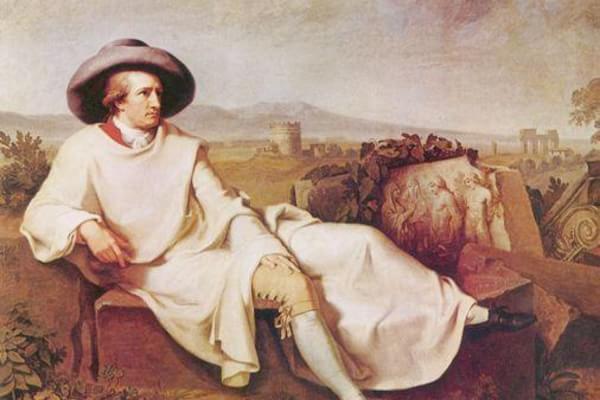Student: That sounds like psychology.
聽起來很像心理學。
Professor: Well, color theory is used in psychology too.
顏色理論也應用在心理學中。
Some psychologists do use their field's version of color theory to diagnose and treat patients.
一些心理學家會運用心理學中的顏色理論來診斷并治療病人。
Um… anyway, Goethe conducted a number of experiments trying to figure out which colors corresponded to which emotions.
不管怎樣,歌德做了一系列實驗以找出什么顏色對應什么情緒。
And in terms of that goal, he wasn't very successful.
以此目的來說,他不怎么成功。

But his experiments actually did show a lot about the relationships between colors themselves, about how colors change when placed next to other colors, about how they interact with one another.
但他的實驗確實發現了顏色本身之間的聯系,即當一種顏色放在另一種顏色旁時,會有什么變化,顏色之間是怎么相互作用的。
Scientists studying optics and chromatics today still marvel at his findings.
今天研究光學和色彩學的科學家們仍驚嘆于他的發現。
But Goethe wasn't really able to establish a clear connection between colors and emotions.
但歌德并不能在色彩與情緒之間建立起清晰的聯系。
Then in 1806, he received a letter from a relatively unknown German artist, a painter named Philip Otto Runge.
在1806年,他收到一封信,來自一位相對無名的德國藝術家,這位畫家叫菲利普·奧托·朗格。
In the letter, Runge outlined his own color theory, specifically the connections he made between colors and emotions.
在信中,朗格概述了自己的顏色理論,特別是他建立的色彩與情緒之間的聯系。
And his ideas about what colors symbolize, about the emotions that different colors inspire were based on the colors red, yellow and blue.
他關于顏色象征的思想,關于不同的顏色所能激起不同情緒的理論,是基于紅、黃、藍這些顏色的。
Runge's choice of red, yellow and blue had nothing to do with what we know from modern-day chromatics, it had to do with Runge's complex system of symbolism, his experience of nature, particularly with his experience of the quality of light at various times of the day, morning, noon and night.
朗格選擇紅黃藍,和現代色彩學理論沒什么關系,而是與朗格自己關于象征主義的復雜系統有關,他對自然的體驗,尤其是對一天中不同時間的不同光亮的體驗,比如早上、中午和晚上。
So each color had a specific symbolic value.
每種顏色都有特殊的象征價值。
Well, four years later, Goethe published a book entitled Color Lesson.
四年后,歌德出版了一本叫《色彩課》的書。
In Color Lesson, Goethe COINCIDENTLY cites the same colors as primary colors.
在《色彩課》中,歌德恰好把同種色彩稱為原色。
At this point, Goethe was already a well-known author, so he was easily able to popularize this idea of primary colors, and specifically the idea of red, yellow and blue as THE primary colors.
此時歌德已經是個很有名的作家了,他很容易就把原色的概念推廣出去,特別是把紅黃藍作為(三)原色。
Student: But he didn't mention Runge?
他沒有提到朗格?
Professor: Well, he did put Runge's letter in the book, at the end.
他把朗格的信收入書內了,在最后。
But he added a disclaimer implying that Runge's letter didn't influence his work.
但他附上了一封免責聲明,暗示朗格的信對他的作品沒有影響。
Apparently, what Goethe was saying was that they just HAPPENED TO come up with the same theory at the same time.
很明顯,歌德聲稱,他們只是恰好同一時間想出了同樣的理論罷了。










